Firstly, in your circuit, the opamp is not being asked to sink 1A, the current is:
I = (5V - 3V) / 200Ω = 10mA
Almost any opamp is capable of sinking that current, and nothing will be damaged.
Let's assume that the opamp is an LM358, and that R1 = 2Ω, in which case you are certainly over-loading the opamp.
According to this datasheet, the short circuit current (to ground) is typically 40mA maximum, and while there's no mention anywhere of short circuit current while sinking, I will assume a similar limit in that case also.
This answers your first and second questions "can/if the opamp sinks 1A..." - an LM358 can't, and it won't.
Due to its inability to sink or source 1A, the opamp cannot hold its output at 3V under such a load, which may thus be considered a "short-circuit" in this scenario. I'll assume that the resistor wins, clamping the opamp's output close to 5V.
The opamp's lower output transistor (the one responsible for sinking current) has a voltage across it of 5V - (-5V) = 10V, and at 40mA it will be dissipating 10V x 40mA = 400mW.
The datasheet (page 4, "Absolute Maximum Ratings") tells us that the maximum power that may be dissipated is somewhere between 435mW and 830mW, depending on the packaging. So while we are certainly abusing the device, it will probably survive, even if the abuse continues indefinitely.
Damage could occur if the power supplies were larger (say ±10V), but hopefully you can see why abuse, up to some point, may be perfectly tolerable.
However, there are opamps that are quite capable of driving a 2Ω load, such as the OPA569. If you employed this device in your circuit, it could easily maintain an output of 3V, and sink the entire 1A of current that would result.
You would still be concerned with power dissipation, because it is now:
P = 1A x [3V - (-5V)] = 8W
You would need some serious heat sinking and air-flow to give the thing any hope of surviving for more than a few seconds under these conditions, but you can see why the answers to your questions really depend on what opamp you are talking about.
To address your third question "is this a valid circuit, with valid applications", yes, and no. You can't drive a 2Ω load with an LM358, but you can with an OPA569. And of course there are applications where the load is a current source, which the opamp must sink.

